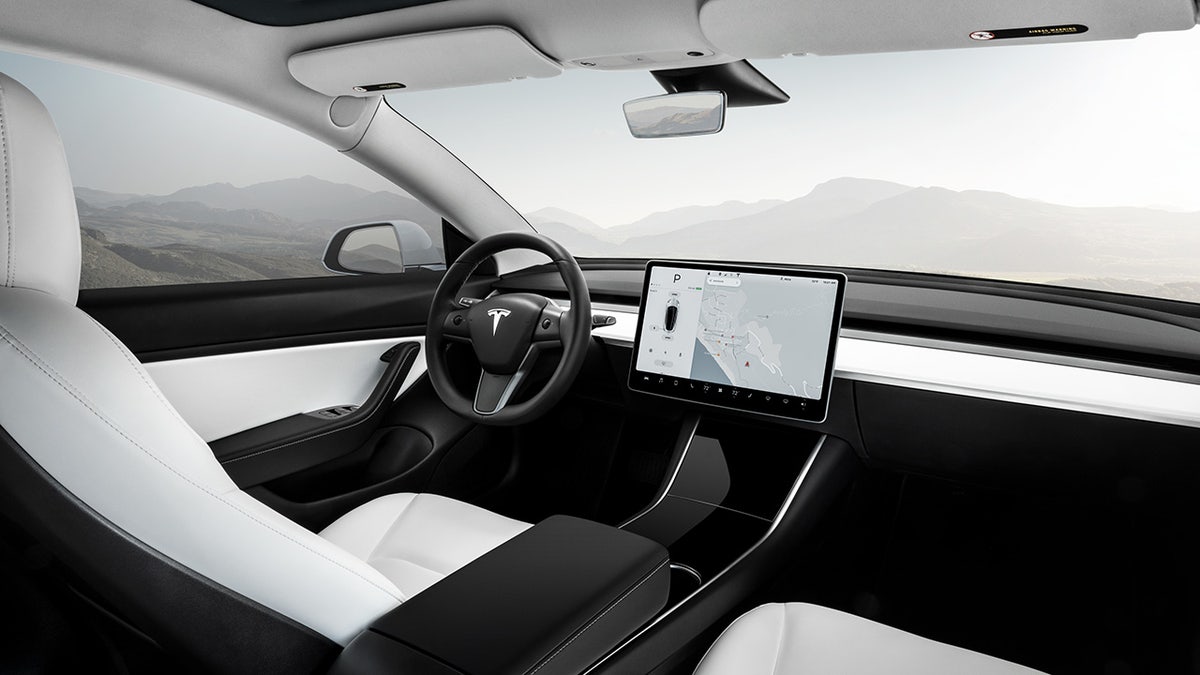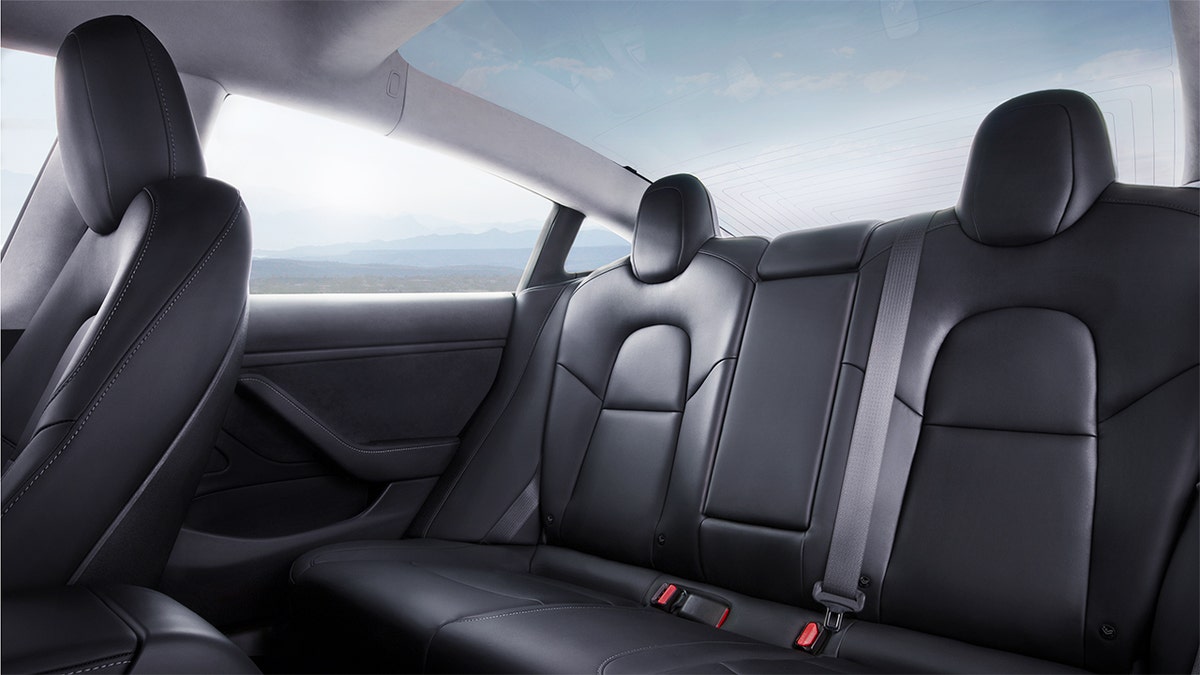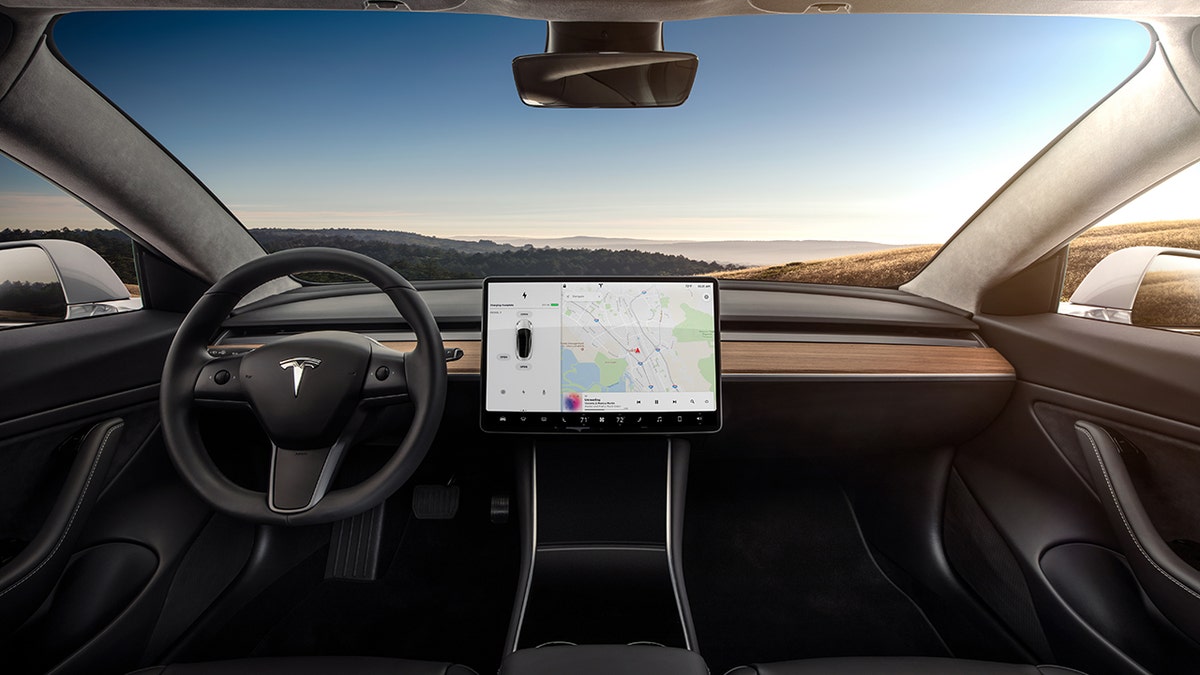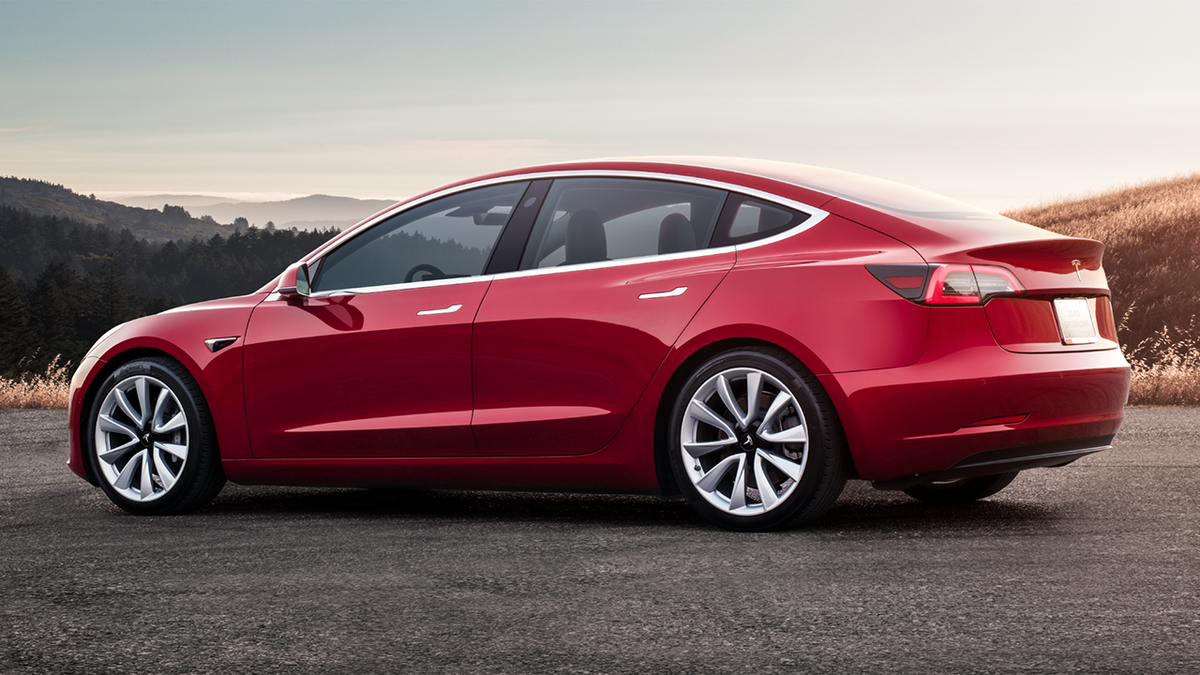Elon Musk explains reason for Tesla Model 3’s cockpit camera
Tesla CEO Elon Musk explained the reason for the Model 3’s mysterious cockpit camera.
Of all the cars on sale today, the only one that would qualify as an influencer if it were human would be the Tesla Model 3. Love it. Loathe it. It doesn’t matter how you feel. There’s no other car that’s changing the conversation the way that the sleek sedan is. The Chevy Bolt and Nissan Leaf? Not trending.
I recently got around to spending some quality time in a Model 3 that I borrowed from a private owner. It wasn’t the long-awaited $35,000 model (which folks are still waiting for), but a dual-motor Long Range with a premium interior and about 6,000 miles on it. All problem-free, according to him.

(Fox News Autos)
He said he paid $53,000 for it last year. Last week a similar car cost $48,500. Today it's $49,500. This is how Tesla’s direct sales model works. It meets demand with frequent list price adjustments, sometimes dramatic, instead of offering incentives. It differs from industry practice, and is an honest way of doing things, but for loyal customers tracking the resale value of their cars, or Wall Street investors watching the company, comes across as a bit frenetic.
One thing that won’t change is the size of the Model 3, which is more of a compact 4-door than the midsize Elon Musk and Tesla bill it as. It’s not as long and has the same rear legroom as a BMW 3-Series, a chief competitor and the quintessential compact. What makes the difference is that the overall interior volume – boosted by a front trunk where an internal combustion engine would usually be – squeezes it over the threshold for a midsize on the EPA scale.

The driver's seat isn't all the way back in this photo, but set comfortably for the author's 6-foot 1-inch frame. (Fox News Autos)
In reality, if 6-footers are in the front seats, either they are completely comfortable, or no one is. There’s nothing wrong with this. Some cars are just smaller than others, but if you’re buying a Model 3 sight unseen, as many do, don’t expect a limousine to get dropped off in front of your house on delivery day.

(Tesla)
The cabin is airy, however, thanks to a full panoramic glass roof that’s tinted just enough to dim the sunlight to a pleasant level. At least in New York in early spring. Even rear seat passengers have the sky above their heads. Below them is a synthetic leather that’s so supple it feels more like a fabric than a hide. If I could, I would upholster my entire life with it. The front seats are showstoppers that fully live up to the “premium” billing and do a lot to distract from the fact that the rest of the cabin trim isn’t any nicer that what you find in a Mazda these days.

(Tesla)
The minimalist design of the dashboard is visually stunning, however, as it stretches door to door with just a steering wheel to ruin the symmetry. In models with a wood trim, it reminds me of an Atari 2600 console. This is an interesting coincidence since the 15-inch touchscreen mounted in the center of it is equipped with several games from the company’s archive.
The screen is also what you use to control nearly everything in the Model 3 and it houses all of its displays, including the speedometer. The positioning is fine, but considering how much real estate is available, some of the text and icons are smaller than necessary. Executing simple tasks, like adjusting the steering wheel or climate control, also require more steps than knobs or buttons would and your eyes off the road for too long. The fact that it does so many things is impressive, the ease and speed at which it does some of them less so.

(Tesla)
That’s where Autopilot comes in. Tesla’s SEMI-autonomous driving aid is a countermeasure to distractions, although it can be a bit of one itself. It has an evolving feature set that makes it hard to resist pushing the limits to see what it is capable of when you should be relying on it as backup to your own driving.
Autopilot can control the speed of the car and steer it within a lane, which it excels at on the highway. As long as it has a bead on things, it’s smoother than you would likely be. The slower and windier the road gets, the jerkier its inputs become, but I can see why videos have started popping up of “sleeping” Tesla drivers, because it lulls you into a sense of confidence in its abilities.
If you take your hand off the wheel, it will eventually warn you not to do that and then disengage. Tesla hasn’t made it clear exactly how long the Model 3 can go without any driver input, but I went about a minute before it posted a message on the screen, followed by a flashing light and then an audible alarm as it signed off. If you make it that far, you have to pull over and turn the car off to use Autopilot again. If you don’t do anything, it’s programmed to turn the hazard lights on and bring itself to a stop in the lane. But keep checking in and Autopilot will cruise indefinitely.

There are Mercedes-Benzes that can do this, but the Tesla does it better. Both systems will also change lanes with a flick of the turn signal, but here the Mercedes-Benz might have the Tesla beat. In a couple of instances, when there was a car far behind me in the passing lane, the Model 3 couldn’t seem to figure out if it should go or not and started doing an unnerving serpentine before making the move. In my experience, Mercedes-Benz’s system is more decisive.
Soon, you won’t have to be in the Tesla. It offers a Navigate on Autopilot feature that can drive the car all the way from on ramp to off ramp on the highway if you have a destination set, merging into traffic, changing lanes and passing other vehicles along the way. Initially, it would only suggest the maneuvers and require you to acknowledge them with the turn signal stalk, but there’s an update rolling out that that’s smarter and allows you to give it blanket prior approval to just go for it whenever it wants to, as long as it senses any sort of “user” input, according to Musk.
The version I tried was a mixed bag. It was seamless most of the time, but often abruptly adjusted its speed in the merging lanes, and once accelerated rapidly directly toward two cars that were far too close for it to fit between them. I didn’t wait to see how that was going to pan out and tapped the brakes.
Negotiating off ramps was both inconsistent and consistent. I used the same exit five times as a control. Twice the car asked me to take over before we even arrived at it and on the three other attempts it followed an aggressive line at a speed faster than I would have, but exactly the same one each try. Tesla constantly collects data from all of its cars on the road to update how Autopilot works, and I got the impression it had developed that specific path from the information, rather than just having the car follow the painted lines.

(Tesla)
Autopilot is a work in progress and far from perfect, and my experience suggests that you should resist the urge to convince yourself that it is. People have gotten hurt and worse by doing that. But if you treat it as an assistant, it may save your bacon someday. According to Tesla, its data indicates that you’re much less likely get into an accident with it turned on.
The Model 3 is a car you’ll want to drive yourself, anyway. And with 310 miles of range that can be replenished to 80 percent in about 40 minutes at the newest Supercharger stations, you can do plenty of that. The rear-wheel-drive model was also rated at only 310 when it was new, but an over-the-air software update in the middle of the night a few weeks ago added an extra 15 while also making all Model 3s a little faster. The tooth fairy is on notice.Tesla’s a bit hazy on how much power the Model 3 has on tap, but says it will accelerate to 60 mph in under 4.5 seconds. That speed arrives in near silence with all of the immediacy that electric motors are known for.

(Tesla)
The steering is similarly responsive and the Model 3 feels solid as a steel brick, despite concerns raised by Consumer Reports and others about its long-term reliability. Its tires are a little stiff for the New York metro area’s rutted roads, but the overall blend of ride and handling is superb for car that doesn’t have an electronically controlled suspension. Turn up the juice in a bend and you’ll find that it’s tail-happier than a typical all-wheel-drive car, but that’s the fun way around one. If not the most reassuring for everyone onboard.
The problem with making a final assessment about the Model 3 is that it’s a constantly moving target. Even in the time since I started writing this, Tesla altered its model lineup and added a leasing program. One thing is for certain: There’s no electric car anywhere near its price range that comes close to competing with it, and a lot of the liquid-fueled ones have trouble, too.
FOLLOW FOX NEWS AUTOS ON FACEBOOK FOR MORE
This story has been updated to clarify the specifications
